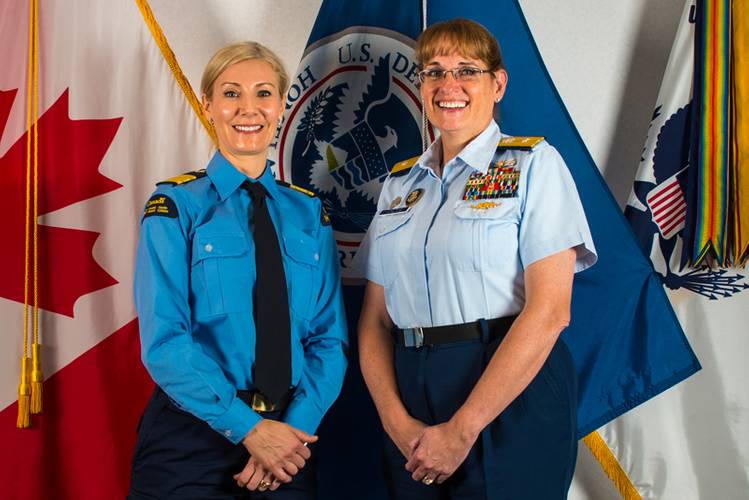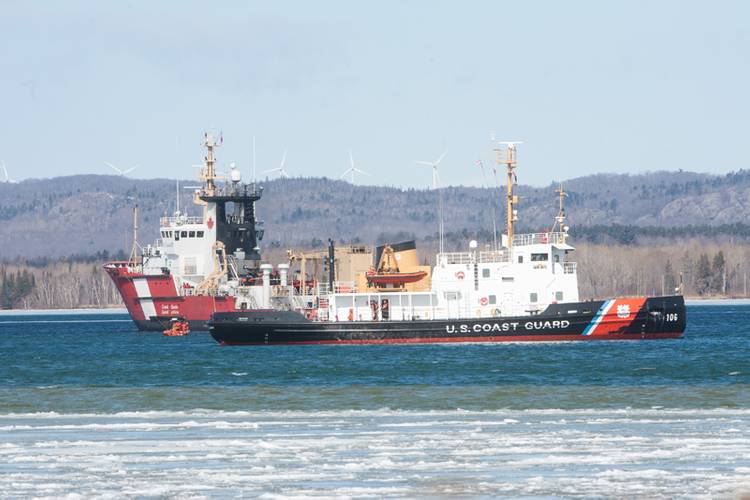Rear Adm. June E. Ryan, commander of the U.S. Coast Guard Ninth District, was welcomed aboard the Canadian Coast Guard Ship Samuel Risley by Assistant Commissioner Julie Gascon and Captain Signe Gotfredsen of the Canadian Coast Guard, Central and Arctic Region Monday.
After a relatively mild winter on the Great Lakes escorting ships through ice and preventing ice jams, the Samuel Risley was upbound through the Soo Locks and the St. Marys River to Lake Superior for further icebreaking at the Port of Thunder Bay and buoy-tending duties.
"We greatly appreciate our close partnership with the Canadian Coast Guard on our shared waterways," said Ryan. "Crews from both countries play a vital role in ensuring the safe movement of cargoes, flood mitigation, and search-and-rescue serving our maritime communities during each ice-season, and we look forward to further strengthening this partnership in years to come.”
"The work of both Coast Guards is world-class," noted Gascon. "Our brave Coast Guard personnel on both sides of the border have a critical role in fostering safe, secure and environmentally-responsible maritime activity here on the Great Lakes, Georgian Bay and connecting waterways.”
In addition to icebreaking, the two Coast Guards deliver a multitude of maritime services including search and rescue, environmental response, marine communications and traffic services, aids to navigation, maritime security and waterways management.
Following their voyage aboard the Samuel Risley, Gascon and Ryan embarked the U.S. Coast Guard Cutter Morro Bay to meet Lt. Kenneth Pepper, commanding officer, and crew. The two Coast Guard leaders also inspected the Canadian Coast Guard’s newest helicopter assigned to Great Lakes and Arctic Operations. Based in Parry Sound, Ontario, the new Bell 429 helicopter is a crucial component for delivering Canadian Coast Guard services and maintaining public safety. Canadian Coast Guard helicopters are a workhorse of the waterways, flying to remote sites to support construction and maintenance of Canadian Coast Guard communication sites, oil pollution response, ice monitoring and support to Government of Canada Science programs.
The day concluded with a tour of the U.S. Coast Guard’s Vessel Traffic Services St. Marys River in Sault Ste. Marie, Michigan. On average during the past 15 years, VTS St. Marys River safely and efficiently moved more than 61,000 commercial vessels through the 77 nautical miles of the St. Marys Vessel Traffic Service area.

















